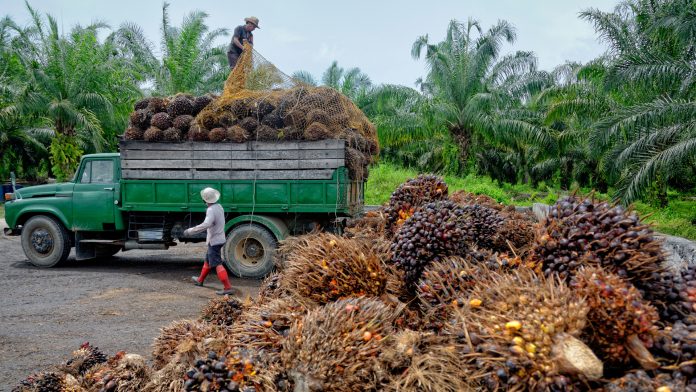Researchers from Malaysia have created a new bioplastic film made from a by-product of palm oil to reduce plastic pollution and biological waste from the palm industry.
Research published in Current Research in Green and Sustainable Chemistry suggests that a biodegradable plastic film made from a by-product of palm oil could minimise plastic pollution and reduce the amount of waste produced by the palm oil industry.
The research team, based at Universiti Sains Malaysia, wrote: ‘Hemicellulose is a naturally occurring biopolymer obtained from renewable materials such as polysaccharides and protein. It shows a huge potential for replacing non-biodegradable petroleum based polymers due to low cost and biodegradability.’
In addition to plastic waste, 19.8 million tonnes of waste palm oil fruit bunches is discarded in Malaysia each year. To reduce the environmental impact of these forms of waste, the researchers have turned hemicellulose from waste palm oil fruit bunches into biodegradable films for green packaging.
Hemicellulose is a promising biopolymer for film manufacturing applications as it is flexible and has low gas permeability and high water resistance. Hemicellulose is also known to be a major component of the fruit bunches that are discarded by the palm oil industry. After extracting hemicellulose from bunches, the researchers confirmed that the material ‘can be identified as a potential raw material with a huge yield in the production of green packaging’.
The researchers decided to blend the hemicellulose with the non-toxic, commercially available biopolymer carboxymethyl cellulose (CMC). This is known to have positive effects on the mechanical properties, transparency, flexibility, and moisture absorption of other biopolymers.
The team blended different amounts of hemicellulose from the palm oil fruit rusks with CMC. This was then made into biopolymer films of varying thicknesses (all under a tenth of a millimetre). Extensive investigation into the physical and chemical characteristics of the films revealed that those containing 60% hemicellulose had optimal properties for making biodegradable packaging materials.
This new hemicellulose blended material can offer a cheap and abundant biodegradable polymer. It presents a promising alternative to polluting non-biodegradable plastics. Although producing biopolymers from palm industry waste does not prevent further industry-related deforestation, using this by-product adds to value to the crop, and as the authors note: ‘Consequently, environmental impacts can be minimised significantly’.







